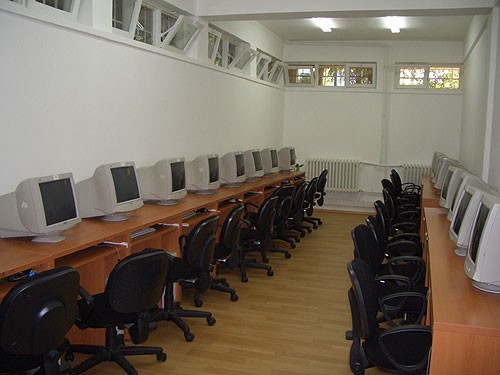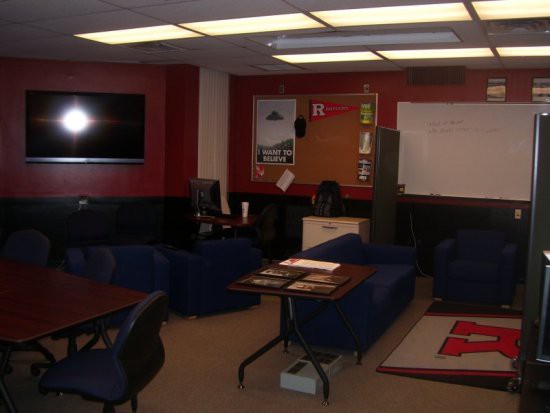From 0-350 In Three Years
Back when I first declared my CS major at Rutgers three years ago, the community was a far cry from the vibrant and passionate one that characterizes Rutgers today. When I started, Rutgers computer science was a disparate collection of students who scarcely got together in groups larger than four people.
Since then, the community has grown by leaps and bounds; its members have launched startups, taken second in the inaugural MLH season, and founded both a semi-annual hackathon and a semi-annual tech meetup. Now that I have 1.5 feet out the door at Rutgers, I wanted to take a look what factors came together these past three years to change Rutgers CS from a scattered community to the massive group of developers it is today. In the process, I hope that our success can provide some ideas for people hoping to create a similar culture at their school.
We got a physical space for students to socialize in
When you hear “campus computer labs”, it generally conjures up unappealing images like this:

Although there is a fair amount of that at Rutgers, one of our labs is quite different. A few years back a Rutgers employee named Lars Sorrenson decided to convert one of our CS labs into a collaborative learning space. The result was the CAVE, a CS lab which looks something like this:

Although the CAVE isn’t exactly a productive work environment, its design has made the room a CS community hub at Rutgers. The CAVE serves as a great place for workshops and tutoring, but its most important role is as a place for students to meet and hangout between classes. Sometimes they’ll discuss programming, but other times they will just play video games or watch the latest Game of Thrones episode on the giant TV. Through it all, familiar faces from class become acquaintances, acquaintances become friends, and those friendships form the basis for a strong community of developers at Rutgers.
What any university can do: Create a comfortable physical space for students to hang out in and get to know each other. If you can convert an old computer lab, that’s great; if not, try looking for other options to get people in the same space together.
HackRU was started and held regularly
Although now there are a fair number of Rutgers students who regularly travel to hackathons, three years ago you would have been pressed to find more than a handful who even knew what a hackathon was. HackRU initially started out as a modest attempt to grow this small handful, but since then it has grown to engage 250+ students every semester. In the process, it has helped hugely in building community by bringing hacker culture to students at Rutgers.
As the attendance at HackRU demonstrates, there is a large group of students who are either too busy, too intimidated, or simply unaware of hackathons that are going on around the country. By creating an on-campus hackathon, the organizers of HackRU have been able to bring these students together and get them excited about building projects in a way that didn’t happen before. This is not only awesome because it grows the skills of young developers, but also because it shows all the attendees that they’re a part of a larger Rutgers developer community.
What any university can do: Throw a hackathon at your school, no matter where you are. Start by targeting just students at your university and then grow it from there. If you don’t think it’s worthwhile, have a look at what a HackMIT organizer had to say about her experiences.
We created culture based on learning and positivity
Tess Rinearson wrote an awesome article a while back about how CS is a community that is focused on building each other up, and we’ve tried to make that very evident at Rutgers. As many community leaders have grown and become more skilled, they have started to focus on helping underclassmen improve their skills and encouraging them to work on side projects.
From their very first CS course, students are introduced to the idea that Rutgers CS is a helpful community of students by the peer mentoring program. Through this, upperclassmen are put in charge of running small recitations for CS 111, our Intro to CS course at Rutgers. In addition to helping take some of the load off department TAs and establishing a precedent of helpfulness, the peer leader program has served as a great way for upperclassmen to bring underclassmen into the CS community without them having to attend events.
Over the past three years, the spirit of that program has been taken up and broadened by a couple of on campus organizations dedicated to helping students build their programming skills outside the classroom. One such organization, RUMAD has done this by helping students build mobile applications, a process which includes hands-on workshops and presentations about the latest technology. Another organization called USACS has been offering mentoring, tutoring sessions, and a weekly Hacker Hour series to teach students about topics they wouldn’t learn in class. At the same time, RU Tech Meetup and the Rutgers Hackathon Club have also sprung up as avenues for students to get together and show off what they built, thus furthering the idea that students can, and should, get together to build projects on their own.
Taken together, these efforts haven’t produced a development utopia at Rutgers, but they have produced a community of students who are eager to grow their skills and help others do the same.
What any university can do: Create mentorship programs to encourage young developers and help them feel comfortable. Also, create opportunities where people can be recognized for their hard work.
Leaders stepped up and built organizations which brought people together
One of the biggest problems that faced the Rutgers technology community when I joined was that it lacked leaders who took the initiative in building it. All that has changed over the last 3 years as a handful of leaders have emerged to drive the community to its current state.
The proto-leaders in this sense were V and Sameen, two of the big architects behind HackRU, but they aren’t the only ones. Since HackRU 1, many leaders have stepped up and left a legacy of building community at Rutgers. On the USACS side, after V and Sameen stepped down, Devon served as president and brought his own brand of creativity to the table, and now Billy Lynch is doing the same with his presidency at USACS.
At the same time, leadership has expanded past USACS in the form of Swift, who has set the gold standard helping Rutgers students even after graduation, and the RUMAD team: Nis, Dave, and co., all of whom have taken RUMAD from nothing to a 200+ person club in just two years. Without the contributions of these and many other leaders, it is tough to say what the Rutgers community would look like today. However, what’s for sure is that because of these students’ hard-work in building events and organizations, Rutgers technologists have been able to come together in a way that was unheard of 3 years ago.
What any university can do: If you feel like your school needs to have a larger community, start planning events you’d want to attend and then market the hell out of them. Communities don’t just magically appear from thin air, it takes people to build them.
Looking back at the past three years, it’s pretty amazing to see what how much the CS culture at Rutgers has grown. While we haven’t built a development paradise, we have taken a community of 10 students and transformed into a group of 350+ developers who are energized about building new projects. Sadly my time as a Rutgers CS undergrad is coming to an end, so I won’t be able to shape the future of the undergrad community anymore. Nonetheless, I’ll be back as an alumnus over the coming years, and I’m excited to see how future students find ways to grow the Rutgers developer community even further.
This initially appearedon Medium